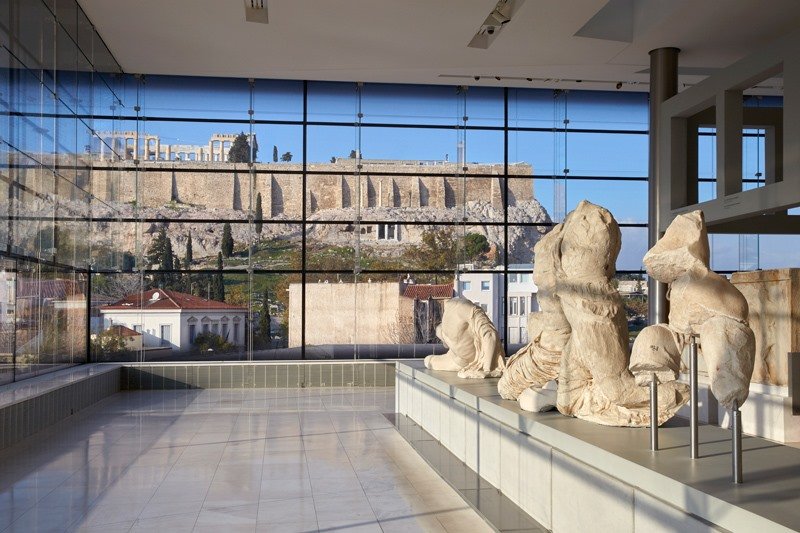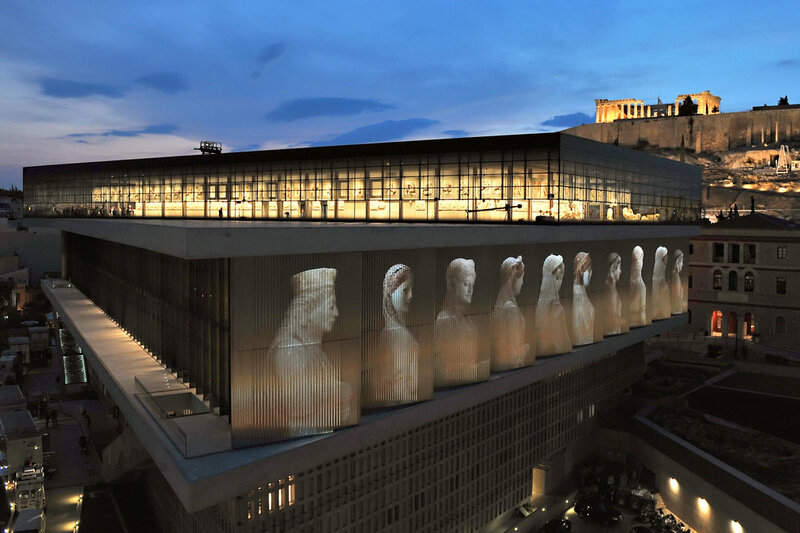The new Acropolis Museum, at the intersection of Makriyanni and Dionysios Areopagitis Streets, emerges grandiloquently from the garden of the Weiler Building. Designed by architect Bernard Tschumi, it is one of the world’s most modern museums.

The Museum entrance leads through to a wide ramp with a glass floor, the exhibition area for the finds from the slopes of the Acropolis. This is followed by the gallery of Archaic objects on the south side, with secondary lighting from the skylights. There are central stairs, escalators, and lifts leading up to the Parthenon gallery.
Visitors will be able to see the frieze, metopes, and pediments of the Parthenon, whilst the return route stops at the post- Parthenon works, the Caryatids of the Erechtheion, followed by Roman antiquities and leading down again through the ramp of the slopes. In addition to the galleries, there are also auxiliary areas covering an area of 23 000 sqm. On the ground floor, there is a shop, cafe, lecture hall, and small and large temporary exhibition galleries.

In the glass hall of the atrium or cella of the Parthenon, there is an area with a glass floor and a glass ceiling. A series of inscriptions from different eras primarily 5th century BC connected to the construction of the Parthenon is exhibited here.
In the Museum galleries, estimated to cover 14 000 sqm, the visitor can admire the evolution of Attic art from the Archaic period until the high point of the classical era in the 5th century BC.
Masterpieces of sculpture that once decorated the temples of Acropolis or were dedicated as offerings; from the Archaic temples, a pedimental sculpture of limestone depicting myths, superb works by the sculptor Phidias: these are just some of the interesting exhibits in a Museum which attracts visitors all over the world.





